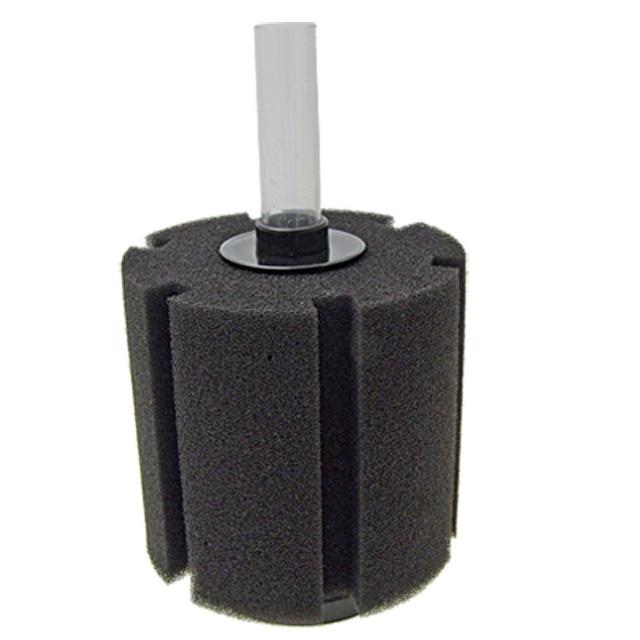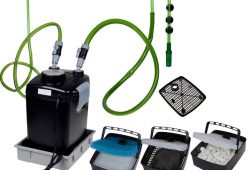Using An Aquarium Sponge Filter For A Small Fish Tank
In the article it is spoken about Using An Aquarium Sponge Filter For A Small Fish Tank. If you are looking for a filter that is ideal for a small aquarium of about 3 gallons such as ones used for betta fish, then an aquarium sponge filter would be ideal. There are many reasons for why an aquarium sponge filter would be best for a small fish tank, the main reason being the fact that they do not focus the water suction into a small inlet like the other filters.

An aquarium sponge filter basically is a special piece of sponge that is attached to the end of the water inlet. In doing so, the inlet that water is suck into is spread out over a wider area, making it virtually impossible for weak or small fish to get sucked in and stuck.
Contents
Aquarium Sponge Filter Benefits
The increased surface area of an aquarium sponge filter also prevents too much water movement. This reduces the amount of stress placed on the fish especially if your fish a very small or weak.
An aquarium sponge filter provides both mechanical as well as biological filtration. Large debris and excess food is trapped on the sponge head and can easily be discarded by washing it. The sponge itself is an excellent breeding ground for colonies of beneficial bacteria which provide biological filtration.
Another benefit of using the aquarium sponge filter is the cost of it. It is one of the cheapest fish tank filters on sale today. Because it is so basic, with its main component being a simple sponge head, it is not prone to mechanical failure like many of the other types of filters and in case of wearing due to long term use, all that is required is a cheap sponge head change.
Maintaining An Aquarium Sponge Filter
Because the mechanical filter is the sponge head that is soaking in the water, you have to clean it at least once a week to ensure that it is filtering at optimum levels. Cleaning an aquarium sponge filter is extremely easy. You would first want to prepare a small container beforehand. Slowly pull out the inlet tube ensuring that you do not shake off the trapped debris into the water. Place the sponge head into the container and dislodge it from the tube. Shake the tube a little to drip off any excess water.
All you need to do now is wash it. The best way to do this is to use some of the water from the fish tank itself. Because you are supposed to be doing a partial water change each week, make good use of the water you take out of the aquarium to wash the sponge head. Do not scrub the sponge as you would be causing damage to it. What you want to do is swish it around the water to dislodge large debris and give it a couple of squeezes inside the water.
Never ever use tap water to wash the sponge head. The sponge head is home to colonies of beneficial bacteria that provide biological filtration. The chlorine in tap water will kill off most if not all of the colonies of bacteria which took so long to grow.
Once washed, just shake the sponge head a little to drip off excess waste water and replace it onto the inlet tube and place it back into the fish tank. Never dry it especially in the sun because it will not only cause your sponge head to eventually crumble but the ultra violet rays of the sun will also kill off colonies of bacteria.
An Aquarium Sponge Filter Is Efficient
Strangely enough, with all the benefits that an aquarium sponge filter provides, it is one of the most underrated fish tank filters in the marketplace today. I guess one of the reasons could be because it just looks so basic and simple that no one can believe it is capable of providing good filtration. Another possible reason is that it does require weekly cleaning unlike some of the other fish tank filters on sale.



